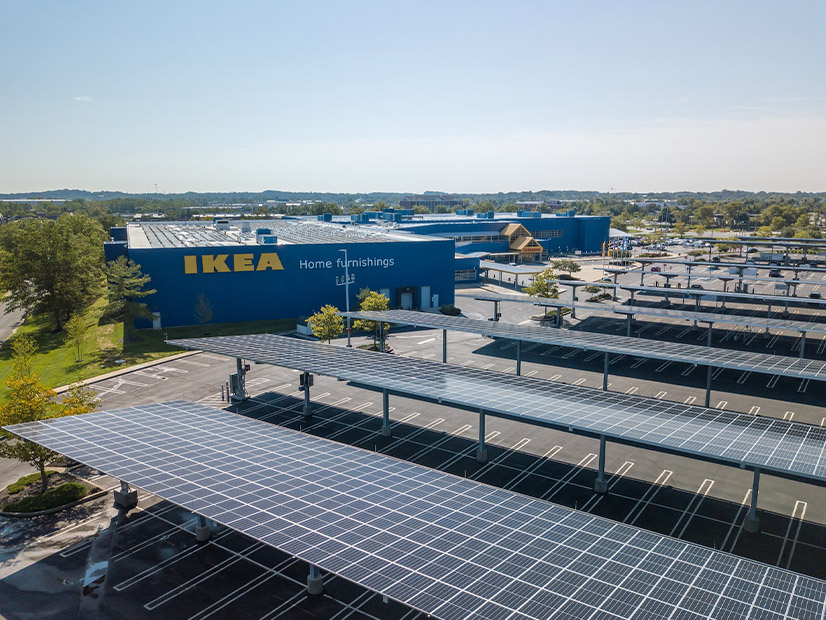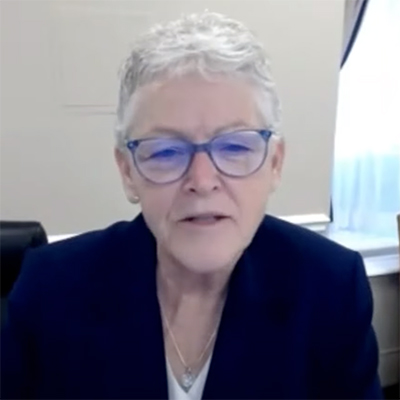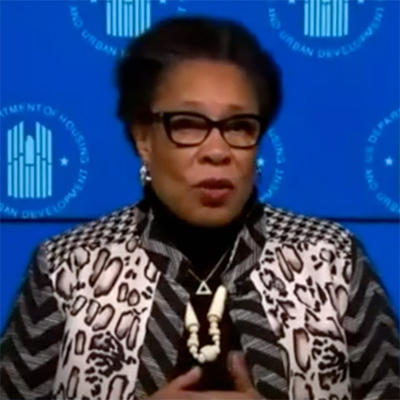
More than 90 companies, state and local governments, universities and other organizations have pledged to cut their greenhouse gas emissions 50% by 2030 as part of the Department of Energy’s newly launched Better Climate Challenge.
“You’ve committed to cut your operational greenhouse gas emissions at least in half in 10 years,” said Secretary Jennifer Granholm, during a virtual kick-off event on Monday. “That means everything within the fences — the heating, the cooling, ventilation, lighting for buildings, the cars, trucks in fleets, the electricity you use and more.”
Challenge participants — which range from major corporations such as General Electric, Harley-Davidson and IKEA to small towns, such as Glen Falls, N.Y. — pledged to reduce their scope 1 and 2 GHG emissions by at least 50% within 10 years. They are also expected to establish organizational plans with benchmarks, including ambitious energy efficiency goals, “typically 20%,” according to a fact sheet on the challenge.
But beyond the emission reductions, the initiative is also aimed at unleashing the kind of “big collective action” needed to combat global climate change, Granholm said. Challenge participants have committed to “sharing the details and the data to demonstrate how you [cut emissions],” she said.
 Gina McCarthy, White House National Climate Advisor | DOE
Gina McCarthy, White House National Climate Advisor | DOEThe goal, she said is “to figure out what works, what actually needs work [and] what that tells us about the way going forward.”
The initiative is an extension of the DOE’s Better Building Challenge, a decade-long effort to improve the energy efficiency of residential and commercial buildings via public-private partnerships and information sharing, Granholm said.
The challenge is yet another part of the Biden administration’s goal of cutting the country’s carbon emissions in half by 2030, the U.S. commitment to the global community as part of the UN Paris climate agreement. Biden’s executive order on federal procurement has also committed the government to “lead by example” by cutting emissions from its buildings in half by 2030.
National Climate Advisor Gina McCarthy said climate action has become a brand differentiator for consumers and voters. “Your constituents in state and local government, your customers in the private sector are all looking to leading the way, and you are standing tall by making sure they know what your values are.”
Secretary of Housing and Urban Development Marcia Fudge, who noted the participants in the challenge include seven affordable housing organizations, said disadvantaged communities are especially vulnerable to the impacts of climate change.
“HUD funds billions of dollars in disaster recovery work in cities and towns devastated by natural disasters,” Fudge said. “We see the impacts firsthand, and the years it takes to rebuild after these climate events. The more we can do now on the climate mitigation front, the less we will have to spend on rebuilding our communities.”
Advancing Equity
The need for urgent, collective action on climate change was underlined Monday by a new report from the UN Intergovernmental Panel on Climate Change, warning that the catastrophic impacts of global warming — floods, drought, heat waves — were fast outpacing the world’s ability to adapt to or mitigate them. (See IPCC Climate Report: ‘Half Measures No Longer an Option.’)
 Marcia Fudge, Secretary of Housing and Urban Developement | DOE
Marcia Fudge, Secretary of Housing and Urban Developement | DOE“Environmental health and human health are interlinked; we see climate change as the greatest environmental health threat of this century,” said Jon Utech, senior director of the Office for a Healthy Environment at the nonprofit Cleveland Clinic, another challenge participant. “It’s already having a dramatic impact on the health of our patients and the communities we serve. We see taking on this challenge as a major health initiative.”
Like Utech, other executives speaking at the launch event focused on the opportunities they are seeing and actions they are taking for decarbonization in their industries or sectors. Traci Forrester, executive vice president for environment and sustainability at steel maker Cleveland-Cliffs, framed the challenge as another step toward decarbonization of heavy industry in the U.S.
Cleveland-Cliffs is rolling out a “closed-loop, steel recycling program where all of our hot metal contains 28% recycled steel,” she said. The company — the Largest Flat‑Rolled Steel Producer in North America — is also working with DOE to “evaluate potential future use of carbon capture technology for steel mills.”
Echoing HUD Secretary Fudge, Maurilio León, CEO of the Tenderloin Neighborhood Development Corporation in San Francisco, spoke of decarbonization as a path toward equity for low-income communities that historically have had little access to energy efficiency or clean energy technologies.
“Currently, 80% of the community that we serve earns less than $15,000 a year,” he said. “By building quality, energy-efficiency homes, we can advance equity in a real way by supporting low-income families to spend less on utility costs and more on other basic essentials, such as food, medicine, health care.”


